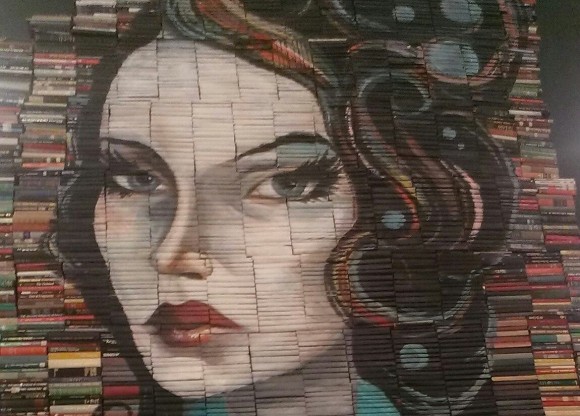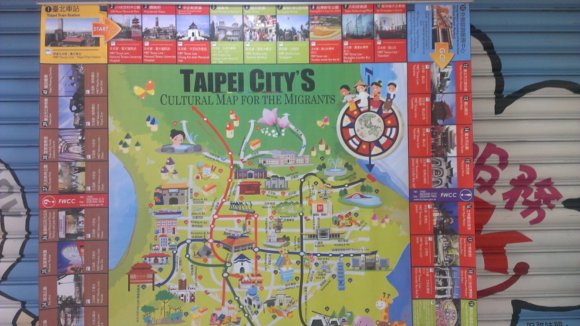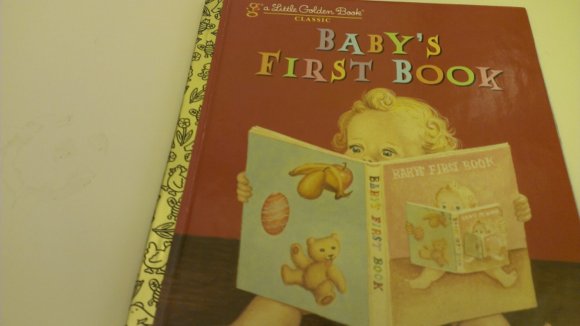In the Taipei Fine Arts Museum, there’s an ongoing exhibit called “The Quoting Room: Creative Reading and Writing“. The interactive space laments the demise of leisurely reading these days. To demonstrate the creative energy of literature, the exhibit asks visitors to “read the novels on display and then write down passages that they feel are particularly resonant.”
Inside the room are sofas, chairs, tables, and a shelf of reading materials (mostly Chinese texts, mixed in with a few English titles such as “The Little Prince”). Organized on one side of the wall are the chosen excerpts written by participating visitors. As expected, majority of the quotes are in traditional Mandarin characters. Scanning the intricately strewn pieces of paper on the wall, I spotted a familiar line. It’s written in Filipino, and it goes:
“Nang ma-inlove ako sayo kala ko pag-ibig mo ay tunay…”

It’s lyrics from Salbakuta’s hit single, “S2pid love”! The quote is the first line of a rap song about a wronged lover’s list of his ex’s dirty laundry (in colorful language). I can’t help but smile at my find. I’m amused if what I’m looking at is a playful disregard of the instruction; a gentle act of subversion even. For one, there are definitely no books in Filipino there. And of course, the line is lifted out not from a literary classic but from a popular radio hit from the early 2000s.
It’s not hard to imagine why the Salbakuta line ended where it did. The museum is under 10-minute walk from the Chungshan area, where the St. Christopher’s Church and Taipei’s so-called Little Manila are located. The area is the default hangout of migrant workers, who usually spend their day off there to remit money to their families, buy imported groceries, or eat Filipino food.
Maybe the quote was posted by a caregiver passing time before returning to another grueling shift. It could also be by a heart-broken factory worker. Or perhaps the physical characteristics of the room itself inspired the the quote writer. The song’s chorus says, “Love…soft as an easy chair.”
By itself, the act of quoting is a way for migrants to write their presence in Taiwanese society even when they can’t assimilate with the local culture. It’s not just the language barrier. The social division based on their labor status drives them to the periphery as unwanted but needed warm body imports. They are the same people who were driven out of an apartment complex because the locals thought their dark skin would cause an everyday social crisis.
Knowing the background of the quoted text and the writer, would the curator rethink the selection? For sure, there’s a vetting process to what goes into the exhibit more than penmanship. For what it’s worth, I love the idea of this Salbakuta line finding its way to a modern museum, poking fun at an otherwise earnest, if high-brow, exhibit.



